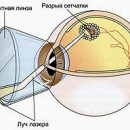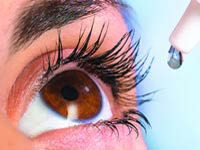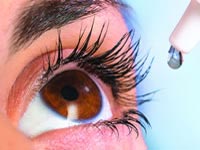Astigmatism is the most common cause of low vision, often accompanying myopia or hyperopia. There are several ways to correlate astigmatism.
Content
What is astigmatism
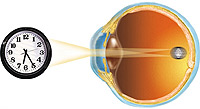 Astigmatism is the most common cause of low vision, often accompanying myopia or hyperopia. The cause of astigmatism is the wrong form of the cornea, which is corrected by glasses, contact lenses or refractive surgery.
Astigmatism is the most common cause of low vision, often accompanying myopia or hyperopia. The cause of astigmatism is the wrong form of the cornea, which is corrected by glasses, contact lenses or refractive surgery.
With astigmatism, some sections of the image can focus on the retina, others - for or before it (there are more complex cases). As a result, a person sees a distorted image. In this case, it is necessary to make the refractive force of the cornea the same at different points, «Colmia» Image in a specific field of retinal.
When complaints with reduced vision, headache, pain in the abrasion region, rapid fatigue with visual load, is not excluded by astigmatism. The disease is more often congenital and hereditary, but may be a consequence of the operation or eye injury. Image of objects with astigmatism fuzzy, blurred places, straight lines look curved. In addition to the defects of visual perception, astigmatism is usually accompanied by a rapid fatigue, a decrease of vision, headaches.
Correction of astigmatism
To date, there are several ways to correct astigmatism: surgical correction, glasses and contact lenses.
AK - Astigmatic keratotomy
The essence of the operation is reduced to the application of deep longitudinal cuts around the perimeter of the cornea, leading to a change in the curvature of the cornea along the axis of the cuts. This operation is extremely complex in predicting the result depends on the type of barking of the cornea and requires a long rehabilitation period. In addition, the operation does not allow to adjust astigmatism over 2D. In this regard, today laser technologies have an indisputable advantage.
PRK - Photo Refractive Keratectomy
The essence of the methodology is to change the shape of the cornea due to the evaporation by the laser of its surface layers. The use of modern laser technologies made it possible to accurately predict the effect of the operation. Nevertheless, the physiological structure of the eye is disturbed - the natural protective layer is removed - this operation is removed, as well as the previous one requires a long rehabilitation period, during which the slightest unwanted eye effects can lead to a decrease in vision corrective. In addition, the process of restoring the protective layer does not always flow successfully - the appearance of clouds and scars (up to 50% of operations in one severity), which requires long-term conservative treatment or even re-surgical intervention.
Lasik - Laser Assisted in Situ Keratomileusis (Lasik, Leaceick)
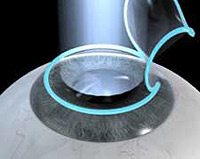 LASIK technology (Lasik, Lasik, Laceik) or laser keratomyosis - the most perfect technique today. It is very «sparing» and an effective method that preserves the anatomy of the corneal layers. It is important that after the operation you will forever put aside the usual glasses and lenses, acquiring absolutely normal vision. On the same evening, you can watch the TV at home, read the newspaper or book.
LASIK technology (Lasik, Lasik, Laceik) or laser keratomyosis - the most perfect technique today. It is very «sparing» and an effective method that preserves the anatomy of the corneal layers. It is important that after the operation you will forever put aside the usual glasses and lenses, acquiring absolutely normal vision. On the same evening, you can watch the TV at home, read the newspaper or book.
Lasik has practically no restrictions on the correction of any degree of refraction anomalies.
With this operation in a protective corneal layer using a special tool (microcratom) a valve opens. Then with the help of an excimer laser, the homogeneous inner layers of the stromas of the cornea evaporate and a new lens is formed from the cornea, with the optical properties, exactly corresponding to the anatomical parameters of the eye, after which the protective layer returns to the place. This operation reduces the rehabilitation period to several days and, performed by a qualified surgeon, practically does not give side effects and complications. In addition, when using an excimer laser of the scanning type of the last generation MEL-70 G-SCAN, it became possible to fully correct even complications resulting from previously transferred refractive operations, for example, such as non-correlated astigmatism.
Glasses
The most common method of astigmatism correction - glasses. With all their advantages, glasses deliver to their owner a lot of inconvenience: they are constantly dirty, fogged, slide from the nose, interfere with sports or simply active physical activity. In order to avoid overworking the eyes, the glasses are selected on 8 line of the table and, therefore, do not provide 100% of vision. Points significantly limit the lateral vision, disturb the stereoscopic effect and spatial perception, which is especially important for drivers, and during an accident or falling, the broken lenses may cause serious injury. Incorrectly selected glasses can cause permanent overwork of the eyes and gradual development associated with these eye diseases. In addition, even correctly chosen glasses often do not provide full-fledged vision to their owner at high degrees of astigmatism. However, glasses today remain the easiest, cheap and safe method of correction of astigmatism.
Contact lenses
Contact lenses have a number of advantages over the glasses and today can provide a normal life even a very active and sports young man. Nevertheless, their wearing is also associated with certain inconveniences. For the correction of astigmatism, only rigid contact lenses are suitable. Many people simply cannot get used to the constant foreign body in the eye. But even if you are quite accustomed to lenses, sometimes they cause irritation and can contribute to the enhancing infection, which, in turn, can lead to severe, up to loss of vision, consequences. They are absolutely contraindicated during any, even the easiest, colds. The process of removal and installation of lenses is quite unpleasant. Contact lens can jump at the most inopportune moment. Today, more and more people resort to the help of a surgeon in order to get rid of inconvenience related to wearing glasses and contact lenses.

